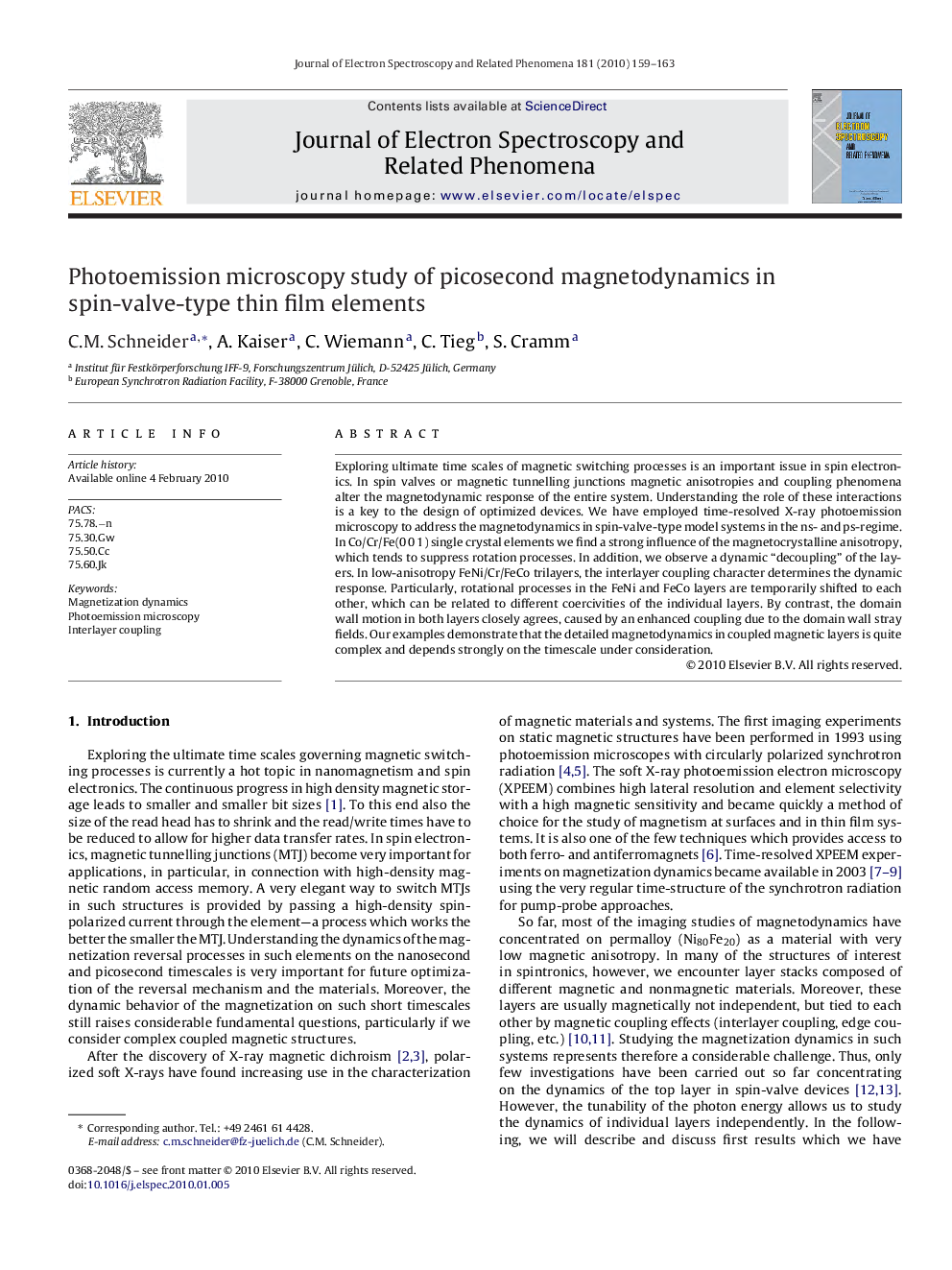| Article ID | Journal | Published Year | Pages | File Type |
|---|---|---|---|---|
| 5396320 | Journal of Electron Spectroscopy and Related Phenomena | 2010 | 5 Pages |
Abstract
Exploring ultimate time scales of magnetic switching processes is an important issue in spin electronics. In spin valves or magnetic tunnelling junctions magnetic anisotropies and coupling phenomena alter the magnetodynamic response of the entire system. Understanding the role of these interactions is a key to the design of optimized devices. We have employed time-resolved X-ray photoemission microscopy to address the magnetodynamics in spin-valve-type model systems in the ns- and ps-regime. In Co/Cr/Fe(0Â 0Â 1) single crystal elements we find a strong influence of the magnetocrystalline anisotropy, which tends to suppress rotation processes. In addition, we observe a dynamic “decoupling” of the layers. In low-anisotropy FeNi/Cr/FeCo trilayers, the interlayer coupling character determines the dynamic response. Particularly, rotational processes in the FeNi and FeCo layers are temporarily shifted to each other, which can be related to different coercivities of the individual layers. By contrast, the domain wall motion in both layers closely agrees, caused by an enhanced coupling due to the domain wall stray fields. Our examples demonstrate that the detailed magnetodynamics in coupled magnetic layers is quite complex and depends strongly on the timescale under consideration.
Related Topics
Physical Sciences and Engineering
Chemistry
Physical and Theoretical Chemistry
Authors
C.M. Schneider, A. Kaiser, C. Wiemann, C. Tieg, S. Cramm,
